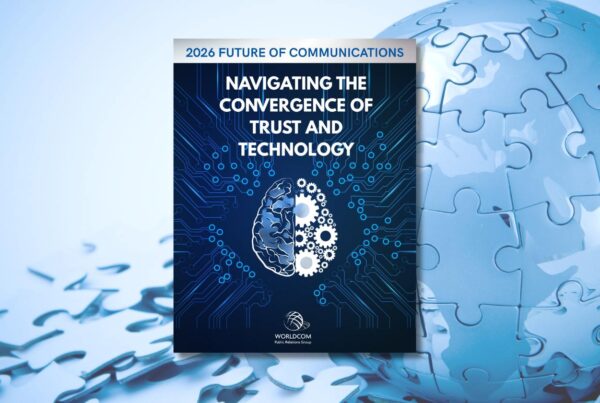By The Pollack Group
Case studies are a valuable tool, providing opportunities to showcase successful strategies and serving as an effective way to entice potential customers and earn new business. Developing a case study, however, requires a careful arrangement of information and creativity without being overly promotional. The agency was featured in the Forbes Agency Council’s latest piece, ’Creating An Effective Case Study: 12 Important Tips To Remember.’ View the original article on Forbes. The No. 3 contribution is from agency president Stefan Pollack.
3. Lead With A Solution
Case studies are, by their very nature, boring. It is important to break past that by creating case studies that strike at the very problem a lead needs help with. Leading with a problem and demonstrating how you fixed it is the best way to get attention — especially if it can be produced in an engaging way, such as through video or audio media. – Stefan Pollack, The Pollack PR Marketing Group
—
1. Don’t Make It About Yourself
The wrong way to approach a case study is to make it about you and your process. The reader cares less about your motivation and more about the results your efforts created. Start off by describing the results that you created and then go into the general detail of your strategic and tactical approach to delivering those results. – John Gumas, Gumas Advertising
2. Tell A Story
The best case studies tell a story, rather than recite a chronology of facts or data points. To create a story arc, start with a few sentences describing the situation, followed by a few sentences highlighting the “dramatic tension” (e.g. X almost happened, Y threatened to derail the effort), and conclude with a few sentences tying the resolution to the value or point of the product or service. – Beth Noymer Levine, SmartMouth Communications
3. See Above
4. Include Relevant Data
It’s great that you worked with a certain company, but what did you really do for them? That should be defined in the case study. If you can’t define it in numbers and results, then think about using the brand in a testimonial instead. A case study is just that — a study of what happened in a particular case. Make sure you tell the whole story. – Christine Wetzler, Pietryla PR
5. Always Use Specific Numbers
If you’re going to show an increase in a certain metric, use the actual number. When you say something like “we increased conversions by 500%,” it sets off a red flag for people. They’ll think you just made it up. But if you show real numbers and even have the screenshots to back it up, it’ll become more relevant and believable. – Greg Trimble, Lemonade Stand
6. Keep It Succinct And Pass On The Fluff
The vast majority of people skim content, including case studies. You have to put yourself in your prospect’s shoes and understand what they want. They’re primarily looking for the success you’ve provided the client. So focus on that and skip on any fluff content that doesn’t align around that. – Nishank Khanna, Demand Roll
7. Tailor Them To Your Audience
Sure, you’re going to have generic case studies, but when seeing a client, ensure that you really understand the problem the client faces. Then make your case show how you’ve solved the problem before. You can highlight different capabilities based on different needs of the client. – Emilie Tabor, IMA – Influencer Marketing Agency
8. Make It Multi-Format
If you can get case studies, quotes and testimonials, always include hard data and tie it to revenue or cost stories. Beyond this, make it multi-format by leveraging graphics, video and text so that it can be consumed and promoted on various platforms. This will maximize the exposure and utility for your successful client case studies. – Zamir Javer, Jumpfactor
9. Let The Images Do The Work
Aside from ensuring a case study is focused on the problem your brand has solved for a customer, nothing brings it to life more than imagery. In lieu of a long-form case study, consider a photo essay with solid captions narrating the case study as a better option for illustrating the value of your product or service and keeping audiences truly engaged. – Emily Porter, Havas Formula
10. Paint A Picture For Your Prospect
Highlighting your wins is great, but remember that a case study should showcase how you solved a client’s most pressing problem so that a new prospect can see how you got from point A to Z. This is how we like to tell our clients’ success stories: client profile, the challenge, results, strategy and looking toward the future. Remember, the results are just one piece of the puzzle. – Bernard May, National Positions
11. Abstract It First
We think if we write it, someone will accept it. If you remove the outlet from the process, more often, you’ll need to rewrite it. Develop the abstract or a couple of abstracts with four elements: company’s expertise and solution; customer’s industry and challenges; what solution you delivered; why that solution is so innovative. Offer the outlet a chance to contribute, then write with insight. – Dean Trevelino, Trevelino/Keller
12. Know When To Insert Them Into The Campaign
We’ve analyzed user footprint data on the inbound journey and see a clear trend. Most people are only interested in case studies once they are convinced that a service provider could be a good fit for them. Case studies usually come after reviewing staff profiles and thought leadership content. Insert them too soon and they lose their value in the sales campaign. – Randy Shattuck, The Shattuck Group






